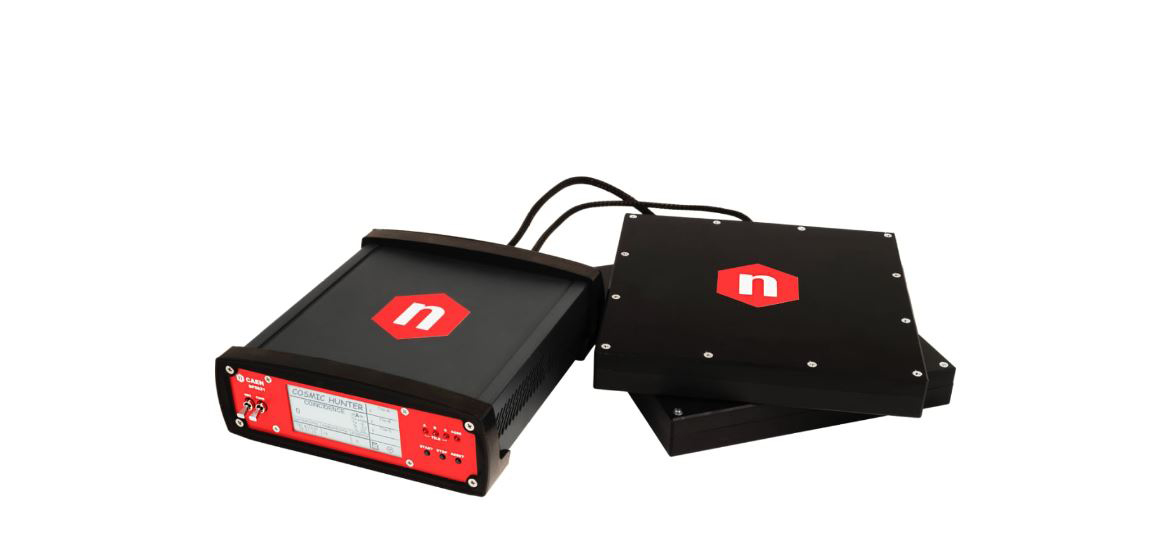| Difficult | Execution Time | Data Analysis | Radioactive Sources |
|---|---|---|---|
| Yes | No |
Hardware setup
This experiment guide is referred to the SP5620CH educational kit. If you don’t have this kit, choose your own from the following list to visualize the related experiment guide: SP5600AN/D – Educational Beta Kit
Equipment: SP5620CH – Cosmic Hunter
| Model | SP5621 | SP5622 (x2) |
|---|---|---|
| Description | Coincidence Module | Detection System |
Purpose of the experiment
The purpose of this experiment is to measure muon vertical flux upon the plastic scintillating tiles and to estimate the detection efficiency of the system by comparing the expected rate with the measured one.
Fundamentals
Muons with an average energy of approximately 4 GeV lose about 2 GeV to ionization before reaching the ground. The production spectrum, energy loss in the atmosphere, and decay of the muons are convoluted in their energy and angular distribution. The integral intensity of vertical muons is: Iv ≈ 82 m−2s−1sr−1 and their flux for horizontal detectors is ≈ 1 cm−2min−1 at energies higher than 1 GeV at sea level, as known in literature [RD3].
Carrying out the experiment

Experimental setup block diagram
- Connect the cable connectors of the two SP5622 to the inputs located on the rear panels of the SP5621 modules.
- Power on the SP5621 module and start acquisition via the front panel START button. The photons which are produced are detected by the photosensor and converted into an electrical signal. The number of counts for each scintillator is available via the SP5621 display.
- Select the scintillators coincidence via the related button on the front panel, then select the integration time of the measurement. Because acquisition of the events will take place only in the presence of the coincidence, all events coming from a cosmic particle that crosses only one scintillating tile will be automatically discarded.
An initial geometry may be realized by placing one SP5622 tile on top of the other. Be sure that the corners overlap exactly. This simple configuration allows us to consider the greater solid angle which may be achieved by applying system geometry. In this configuration one may measure the muon counting rate and estimate the cosmic flux on the total surface of the system. Another interesting measurement of the muon vertical flux can be performed by reducing the overlapping area of the scintillating tiles (see figure above).
Results
Considering the integration over the solid angle, the expected cosmic rate due to the geometry system can be estimated and the detection efficiency can be evaluated. For a more accurate estimation of the cosmic rate it is suggested surround the detector tiles with lead bricks.

Cosmic vertical flux as a function of altitude and atmospheric depth [RD3]


